Licensed Trekking Guide is Mandatory
As of April 1, 2023, a licensed guide is mandatory for trekking in the Langtang Region, including the Short Langtang Valley Trek. The Nepal Tourism Board (NTB) attempted to implement this rule, but it was not strictly followed by individual foreign trekkers.
On February 17, 2025, Langtang National Park issued a letter to the Trekking Agencies’ Association of Nepal (TAAN), requesting the mandatory use of a licensed trekking guide or nature guide for all trekkers entering the park. This request was made due to the increasing number of trekkers going missing or facing safety issues in the Langtang National Park. To enhance the safety of trekkers, TAAN has been urged to enforce this rule among all trekking agencies.
Short Langtang Valley Trek Overview
Short Langtang Valley 7 Days Trek is possible for travelers with limited time, and it can still offer an incredible experience without compromising the beauty and essence of the Langtang region.
This shorter trek allows you to experience the essence of Langtang Valley, visiting villages, witnessing breathtaking landscapes, and exploring Kyanjin Gompa. While this itinerary is reduced, adjusting the pace and adding an extra day or two could enhance the experience and provide more time for exploration.
Langtang Valley Trek 7 Days is popular and shortest trekking destination except Gosaikunda Lake Trek in Langtang Region but it explores Langtang Valley, Kyanjin Gompa Monastery and Kyanjin Ri View point. 7 Days Langtang Valley Trek is perfect for those who are seeking short, comfortable and simply want to escape from Kathmandu in to the high Himalaya influenced by Tibetan Culture.
This enjoyable short Langtang Valley Trek begins and ends in Kathmandu. 7 days Langtang valley trekking package is 5 days Langtang Valley Trek and 2 days travel by bus from and to Kathmandu. People are living in Langtang valley are Tibetan descendants who have their own unique lifestyle and Buddhist culture. Beside the culture 7 days Langtang valley trek offers you the magnificent snow-capped mountain views, wonderful waterfalls, Bamboo and green forest and variety of Rhododendron flowers in spring season. Langtang National Park is worthy about flora and fauna so you can see wildlife like Red Panda, Musk Deer, Deer, wild Goat (Himalayan Thaar), Wild Boar, Blue Sheep and Birds.
Langtang Valley Trek does not have the same level of infrastructure as Everest Region and Annapurna Region Trekking but it have similar views in short time than any others Trekking in Nepal so we highly recommend for those who want avoid crowded trails but observe the natural scenery of Nepal Himalayas on Short time.
We offer a 7-day Langtang Valley Trek at a reasonable cost, providing the best service to group trekkers, family trekkers, solo trekkers, student group trekkers, and couples. We also offer private treks with fixed departure dates to meet the needs of all trekkers. 7 days Short Langtang Valley trek difficulty is easy/ moderate level so not required the previous trekking experience.
The Langtang Village was badly affected by the devastating earthquake of 2015 so some parts were blocked due to landslide for certain time after the earthquake of 2015. However, reconstruction and rebuilding of trekking trail by local people and government. Now it has opened again same trekking trail and enough lodges are available for food and accommodation.
Short Langtang Valley Trek Highlights
- Explore the Langtang National Park- worthy about Nature, culture and wildlife
- Observe the Various Flora Fauna
- Langtang Village with friendly local people of their lifestyle
- Capture the Magnificent view of Mt. Langtang and other snow-peak mountains
- Chance to explore Buddhist culture and ancient Kyanjin Monasteries
- Green forest and beautiful Langtang River
- Kyanjin RI and Tserku RI best view Point of Langtang Region
Why Choose the Langtang Valley Trek?
The Langtang Valley Trek offers breathtaking scenic beauty, including stunning mountain views, diverse landscapes, and forests of pine and rhododendron. The unique terrain provides spectacular vistas of Mount Langtang Lirung (7,227m), which dominates the skyline and offers magnificent views throughout the trek. The colorful rhododendron forests, especially vibrant in spring, add a touch of natural charm and beauty to the journey.
The Langtang region is home to the Tamang people, who have a unique Buddhist culture. The trek passes through traditional Tamang villages, where you can experience their culture, lifestyle, and warm hospitality. There are also famous monasteries to visit, such as the Kyanjin Gompa, located in the upper Langtang Valley, offering insights into the region's spiritual heritage. You can enjoy the local cuisine, including dishes like momo (dumplings), dal bhat (lentil soup), and yak cheese produced in the region.
The Langtang Valley Trek is located within Langtang National Park, a UNESCO-listed area known for its diverse flora and fauna. The park is home to endangered species such as the red panda, Himalayan tahr, and various bird species. This region is renowned for its rich wildlife and natural beauty, making it a significant attraction in Nepal.
- Accessibility and Proximity
The Langtang Valley Trek is relatively accessible, with a short drive from Kathmandu to Syabrubesi, the trek's starting point, making it an excellent option for trekkers with limited time. While it is a popular trek, it is less crowded than other major routes like the Annapurna or Everest treks, offering a more peaceful and serene experience.
There are two famous panoramic viewpoints in the Langtang region: Tserko Ri (5,000 meters) and Kyanjin Ri (4,770 meters). These popular side hikes offer stunning views of Langtang Lirung, Ganesh Himal, and the surrounding peaks. Both viewpoints provide breathtaking 360-degree panoramas of the Langtang Valley, snow-capped mountains, and the surrounding landscapes.
Why choose Short Langtang Valley Trek with us?
Choosing High Pass Adventure Trekking agency for your Short Langtang Valley trekking experience ensures a memorable and fulfilling adventure with expert guidance, personalized service, and a focus on safety and sustainability.
Professional Guidance: High Pass Adventure treks will provide experienced guides and staff, who are knowledgeable about the region, its culture, and the trekking routes. This expertise will enhance the overall experience, providing valuable insights and ensuring safety throughout the journey (Short Langtang Valley Trek).
Safety Measures: High Pass Adventure likely prioritizes safety, providing proper equipment, trained guides, strong porter and emergency protocols to ensure trekkers' well-being during the Langtang Valley Trek.
Eco-friendly Practices: High Pass Adventure will focus on eco-friendly practices to minimize the impact on the environment. This is including waste management, responsible camping, and supporting local conservation efforts.
Quality Services: High Pass Adventure offer quality services, including comfortable accommodations, nutritious meals, and reliable transportation arrangements, ensuring trekkers to focus on enjoying the journey without worrying about logistical and others challenges.
Positive Reviews and Reputation: Positive reviews and a good reputation in the trekking community is indicating that High Pass Adventure has consistently delivered memorable experiences for its clients, making it a reliable choice for the Short Langtang Valley Trek to all clients.
Supporting Local Communities: Trekking with High Pass Adventure to Short Langtang Valley involves initiatives to support local communities along the route, such as staying in locally owned teahouses, hiring local guides and porters, and contributing to community development projects.
7 Days Langtang Valley Trek Costs
The costs for a 7-day Langtang Valley Trek depend on several factors, such as whether you go with a group, hire a private guide and porter with us, or trek independently. For group joining, the basic cost of the short Langtang Valley Trek is $610. This cost includes permits, food, accommodation, guide, porter, transportation, and the office service charge. Hiring a guide and porter is highly recommended for safety, local insights, and to enhance your trekking experience. There will be additional costs for tips for the guide and porter and miscellaneous expenses during the trek through a trekking agency.
5 Days Langtang Valley Trek
The standard Langtang Valley Trek lasts 8 days, starting and ending in Kathmandu, but this Short Langtang Valley Trek is completed in 7 days. The 7-day Langtang Valley Trek can also be customized to 5 days for trekkers who are physically fit and have limited time. If you have previous trekking experience in Nepal and feel you are fit for a 5-day trek, you can request a customized 5-day Langtang Valley Trek plan. We are always flexible and happy to tailor the trip to meet trekkers' needs. For the 5-day Langtang Valley Trek, you will need to hire a private vehicle to and from Kathmandu, as this is necessary to complete the trip within 5 days.
Side Trip from Kynajin Gompa – During The Langtang Valley Trek
Kyanjin Gompa is the name of the place and is home to an old, famous monastery. It is also the final destination for the Langtang Valley Trek. It is the last settlement along the route, and beyond this point, there are no teahouse accommodations. After reaching Kyanjin Gompa, there are a few places to visit, which are listed below:
Kyanjin Ri, also spelled Kyangjin Ri, is a popular hiking viewpoint from Kyanjin Gompa in the Langtang Valley of Nepal, offering two viewpoints — a lower one around four thousand four hundred meters and a higher one about four thousand seven hundred seventy meters — both providing panoramic views of the Langtang Himalayan range including Langtang Lirung, Dorje Lakpa, Langshisa Ri, Gangchempo, and more, as well as stunning glaciers, icefalls, and serene valleys, making it perfect for a sunrise or sunset hike if started early or late, with the hike to the lower viewpoint taking about three hours round trip and to the higher viewpoint around five hours round trip, for which it is recommended to start early in the morning to avoid afternoon clouds, dress in layers due to the wind and cold near the top, bring plenty of water and snacks as there are no shops along the trail, use trekking poles to assist on steep sections, and ascend slowly and steadily due to the challenges of high altitude.
Tserko Ri (also spelled Cherko Ri) is one of the highest and most rewarding day hikes on the Langtang Valley trek in Nepal. Tserko Ri is situated at an altitude of 4,980 meters (16,339 feet) above sea level. The hike starts from Kyanjin Gompa (3,870 meters) and typically takes around 4–5 hours to ascend and about 3 hours to descend, depending on fitness level and acclimatization.
The trail involves a long, steady, and steep ascent across open grassy hills and rocky sections. There is no technical climbing involved, but it is challenging due to the thin air and the steepness. Tserko Ri offers spectacular 360° panoramic views of the Langtang Himalayan range up close, including Langtang Lirung (7,227m), Langshisa Ri, Dorje Lakpa, Gangchempo, and, on clear days, even Shishapangma in Tibet.
This viewpoint is less crowded than Kyanjin Ri because of the longer distance and more adventurous nature of the hike. Along the way, there is a chance to see wildlife such as blue sheep (bharal), Himalayan birds, as well as beautiful glacier views and striking ice formations.
Due to the long distance and physical challenge, it is recommended to start early (around 5:00–6:00 am) for clearer weather and to have more time to enjoy the experience. It is highly recommended that trekkers carry enough water and energy snacks, as there are no shops after Kyanjin Gompa. Wearing warm layers is essential because temperatures at the summit can be very cold, especially with the wind chill. Hike slowly and steadily, as the high elevation makes breathing more difficulty. Trekking poles are also very helpful for both the ascent and descent.
- Kyanjin Monastery and Cheese Factory in Kyanjin Gompa
Around Kyanjin village, there are two notable places to visit: Kyanjin Monastery and the Cheese Factory.
Kyanjin Monastery is a small, ancient Buddhist monastery located near the center of Kyanjin village. According to legend, it is about 700 years old. While the interior decorations are original and very old, the building itself was reconstructed after the 2015 earthquake. The monastery holds great spiritual significance for the local Tamang and Tibetan Sherpa communities. It is a peaceful place, surrounded by massive snowy peaks like Langtang Lirung (7,227 meters).
After reaching Kyanjin village, most trekkers visit the monastery for prayers, meditation, and to experience the local Buddhist culture. The monastery is often adorned with fluttering prayer flags and surrounded by Mani stones, adding to its spiritual and cultural atmosphere.
The Kyanjin Cheese Factory was built with Swiss assistance in the 1950s and is now operated by the Nepalese government through the Dairy Development Corporation. It is located in Kyanjin village.
The factory produces fresh, mild, and delicious yak cheese. (In reality, most of the animals are yak-cow hybrids called "dzo" or chauri in Nepali.) Most trekkers visit the factory to see how the cheese is made and to buy some for tasting.
The best time to visit the factory is during the summer when yaks and dzo graze in the high pastures, resulting in the freshest cheese production.
Important Note for the trip:
- During your pre-trip meeting in Kathmandu, we provide you with a free T-shirt and a warm cap (beanie), as well as a refundable duffel bag for packing your trekking gear.
- We assign one porter for every two trekkers, so the duffel bag should weigh around 10 to 12 kg, which is carried by the porter throughout the trek. Additionally, we can arrange other working team members according to your requirements.
- You must have your own special daypack with a waterproof cover for carrying your daily necessities things like cash, necessary papers, a water bottle or bladder, sunglass, mobile phone, power bank, a camera, toiletries, sunscreen, lip guard, a notebook, light clothing, etc.
- The guide will check your trekking gear and give you suggestions on what to pack and what not to pack. Any unnecessary items (non-trekking items) can be stored at the hotel or our office in Kathmandu.
- A down jacket and a sleeping bag are required for trekking in the Nepal Himalayas. The sleeping bag should be rated for temperatures between -10 to 20 degrees Celsius, depending on the trekking route. If you don't have either of these items, you can rent them in Kathmandu for USD 2 per day. Please note that in case of loss or damage, you will be required to pay the cost of USD 100 per item.
- Every day, the guide will brief you about the walk, nature, food, accommodation, culture, and other aspects of the trek. It's important to listen to and follow the local rules and guidelines provided by the guide.
- Respect locals' privacy before photographing them or their children and appreciate the local culture and customs. Always walk together with your guide and stand in a safe place while animals are passing. Do not smoke or drink alcohol at elevations above 3000 meters.
Important Note for Itinerary:
The itinerary provided given below is a just guideline for the Langtang Valley Trek. If you have your own itinerary, we are flexible to follow it. If not, we will be happy to create a new itinerary based on your requirements and vacation time frame. This trek can be customized according to your preferred duration, budget, and schedule.


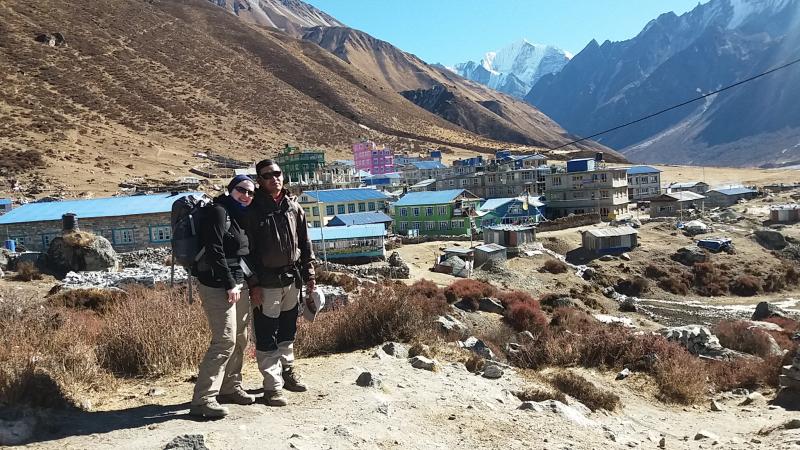

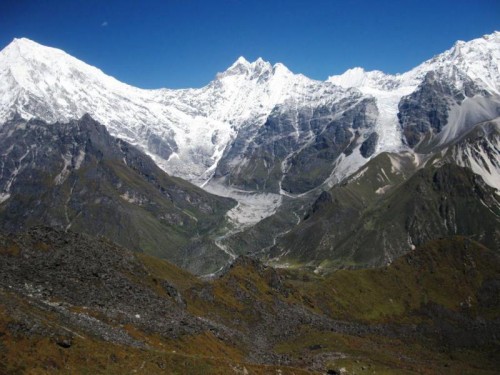

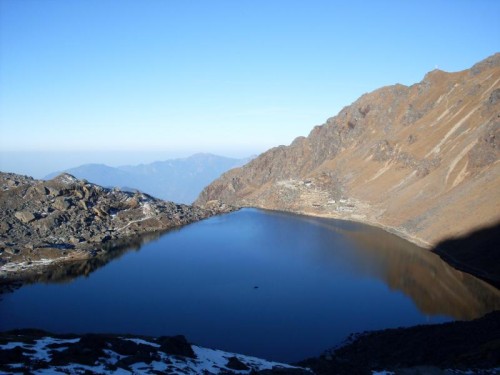

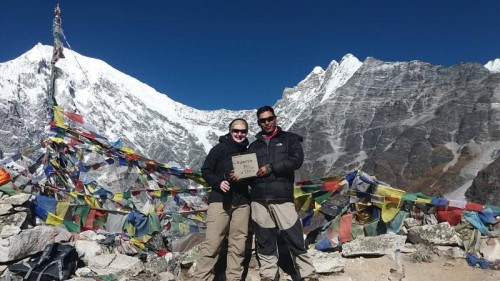
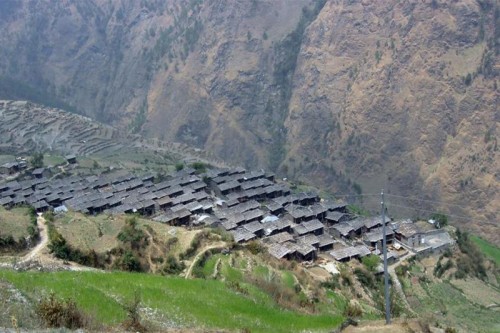
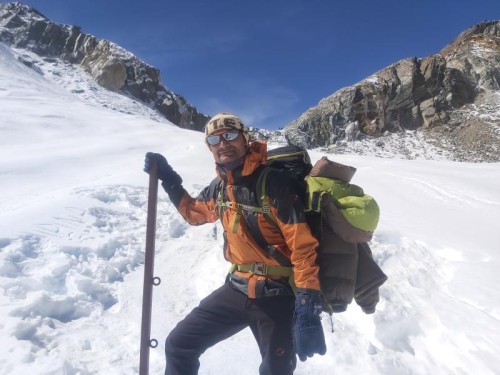

 USD 550
USD 550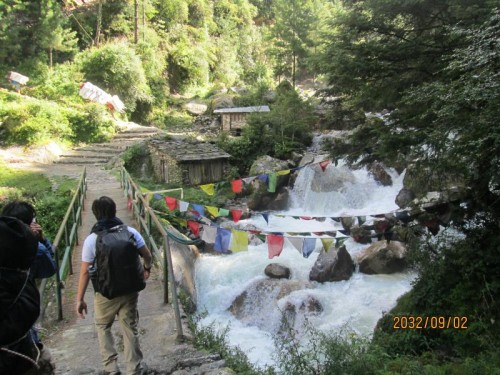
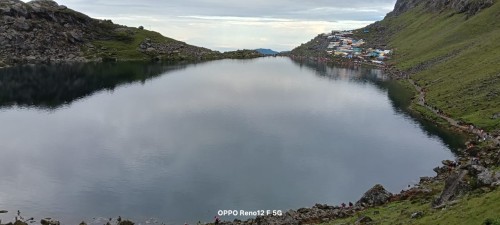
Veronika
Slovakia
Amazing Langtang Trek + Tserko Ri
18th March, 2024
Our wonderful guide Tika made our trip up the Langtang Valley and more up to Tserko Ri a really amazing experience full of interesting facts and gave us intensive support through communication with locals. Driver and office manager also contributed with excellent helpfulness and friendliness. We can def recommend making your trek via this company!
Matus Moravcik
Slovakia
Amazing hike full of fun and good times
20th March, 2024
The guide named Tika made our trip up the Langtang Valley a really amazing experience full of interesting facts and intensive support through communication with locals. Driver and office manager also contributed with excellent helpfulness and friendliness. All questions and issues were addressed to our maximal satisfaction.